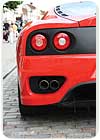

In addition to growth in vehicle production and vehicles in use, demand for coatings, adhesives, and sealants will benefit from other factors that will increase usage rates of these materials. For example, although consumer tastes have tended to favor larger, heavier vehicles over the last decade, automotive designers continue to stress weight reduction and improved fuel efficiency while focusing on safety, aesthetics, and durability. Taken together, these efforts are promoting greater use of structural adhesives, such as epoxies and polyurethanes, at the expense of mechanical fasteners, both to reduce weight and to eliminate potential corrosion problems. Similarly, sealant demand has directly benefited from efforts to make car cabins quieter and better insulated.
Aftermarket demand will continue to benefit from a change in the product mix over the last decade favoring larger light vehicles, particularly sport-utility vehicles (SUVs). Although demand for light trucks and vans (including SUVs) is slowing compared to recent years due to high fuel prices and market saturation, the number of such large light vehicles will continue to increase as a percentage of total light vehicles in use. Because of the relatively recent emergence of light trucks, vans and SUVs, fewer of them are being retired from the light vehicle park relative to conventional automobiles. The resultant shift in composition of the vehicle park will favor the aftermarket for coatings, adhesives and sealants, as larger light vehicles require more materials on a per-vehicle basis than conventional automobiles.
For more information, contact Corinne Gangloff, The Freedonia Group Inc., 767 Beta Drive, Cleveland, OH 44143-2326; phone (440) 684-9600; fax (440) 646-0484; e-mail pr@freedoniagroup.com; or visit www.freedoniagroup.com.